
Figure 1: Iceberg A68 in February 2020 in the open ocean, some hundreds of kilometres away from its calving position from the Larsen C Ice Shelf in 2017. Clouds are visible as shaded areas on the image. [Credit: Satellite image contains modified Copernicus Sentinel3 data (2020), processed by ESA, CC BY-SA 3.0 IGO]
In July 2017, the world’s largest iceberg known as A68 calved from the Larsen C Ice Shelf, located in the western Weddell Sea, Antarctica. Since then, A68 has lost two chunks of ice, A68-B and A68-C, but still remains a giant after more than 3 years. How did it feel to be the greatest, A68?
Being the greatest
With a length of 175 km and being about 50 km wide, this giant iceberg also appropriately received massive media attention. The public and scientists alike wondered: where would the ‘white wanderer’ drift? Would it pose risks to shipping? Had A68 exposed a pristine ecosystem, or would it disrupt ocean circulation and ecosystems? Could spectacular engineering efforts harvest icebergs such as this one as drinkable water reservoirs? Should climate models include these cooling blocks of freshwater? And importantly, was the calving event a harbinger of future runaway climate change? A total collapse of the Larsen C Ice Shelf that ‘buttresses’ the continental ice – that is, stabilising the inland ice behind it – has the potential for several centimetres of global sea level rise.
Where is A68 headed?
Compared with the phenomenal media storm when A68 was born, the first and second birthdays of A68 have been rather uneventful. A68 rocked back and forth and slowly crept along the coast in the ‘Iceberg Alley’, possibly remaining in contact with the sea floor and held in place by sea ice cover. Only in February of this year did it ultimately drift away from the tip of the Antarctic Peninsula – about two and a half years after it had originally calved from Larsen C.
While A68 is now on its way towards South Georgia and the South Sandwich Islands, like many giant icebergs before it (passing South Orkney Island on the way, Figure 2), it leaves behind the Larsen C Ice Shelf that appears stable but with its ice front at its most retreated position ever.
From a scientific perspective, it is good to see that icebergs and their various climate impacts begin to be on the agenda of the climate modelling community. As A68 is one of the best-observed giant icebergs to date, its disintegration and slow melt will hopefully enable iceberg decay processes to be more accurately represented in climate models.

Figure 2: Recent image of iceberg A68 on 13 September 2020 [Credit: NASA Worldview]
Where are we headed?
A68 leaves us with many open science questions. Will the Larsen C Ice Shelf remain stable now that A68 has left? What is the impact of melting icebergs on climate compared to the basal melting of ice shelves (see this post, or this post), and will this impact increase as calving from the Antarctic Ice Sheet increases?
We are wondering whether new giant icebergs in regions of rapid change will attract similar degrees of attention, like the B49 iceberg that calved from Pine Island Glacier in February 2020 in West Antarctica, or other icebergs that are about to calve from the Thwaites or Brunt ice shelves. As A68 just saw its third birthday and could see its fourth in 2021, these new icebergs might still pale in comparison with their famous predecessor.
Further reading
- Rackow, T., Wesche, C., Timmermann, R., Hellmer, H. H., Juricke, S., and Jung, T. 2017. “A simulation of small to giant Antarctic iceberg evolution: Differential impact on climatology estimates” J. Geophys. Res. Oceans, 122, 3170– 3190, doi:10.1002/2016JC012513.
- Jansen, D., Luckman, A. J., Cook, A., Bevan, S., Kulessa, B., Hubbard, B., and Holland, P. R. 2015. “Brief Communication: Newly developing rift in Larsen C Ice Shelf presents significant risk to stability“, The Cryosphere, 9, 1223–1227, https://doi.org/10.5194/tc-9-1223-2015
- Schloesser, F., Friedrich, T., Timmermann, A., DeConto, R. M., and Pollard, D. 2019 “Antarctic iceberg impacts on future Southern Hemisphere climate.” Nat. Clim. Chang. 9, 672–677. https://doi.org/10.1038/s41558-019-0546-1
Edited by Jenny Arthur
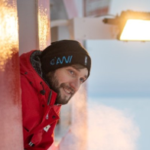 Thomas Rackow is postdoc and climate modeller at the Alfred Wegener Institute, Helmholtz Centre for Polar and Marine Resesarch (AWI). His goal is to add previously missing features and processes like mesoscale ocean eddies, sea ice cracks, or the melting of icebergs into current climate models in order to reduce systematic biases and therefore improve our predictions. He tweets as @thomas_rackow. Instagram: @polarthomas. Contact Email:
Thomas Rackow is postdoc and climate modeller at the Alfred Wegener Institute, Helmholtz Centre for Polar and Marine Resesarch (AWI). His goal is to add previously missing features and processes like mesoscale ocean eddies, sea ice cracks, or the melting of icebergs into current climate models in order to reduce systematic biases and therefore improve our predictions. He tweets as @thomas_rackow. Instagram: @polarthomas. Contact Email:
thomas.rackow@awi.de
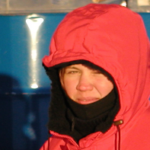 Daniela Jansen is glaciologist at the Alfred Wegener Institute, Helmholtz Centre for Polar and Marine Research (AWI). She was the first person to spot the crack in the Larsen C ice shelf that led to A68’s birth. She works on the dynamics of ice, ranging from microscopic scales of single ice crystals up to the deformation of the huge ice sheet of Antarctica. Contact Email: daniela.jansen@awi.de
Daniela Jansen is glaciologist at the Alfred Wegener Institute, Helmholtz Centre for Polar and Marine Research (AWI). She was the first person to spot the crack in the Larsen C ice shelf that led to A68’s birth. She works on the dynamics of ice, ranging from microscopic scales of single ice crystals up to the deformation of the huge ice sheet of Antarctica. Contact Email: daniela.jansen@awi.de

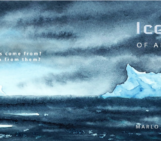
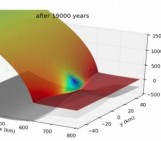
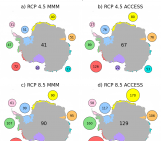

Clint Undseth
Im interested to read your materials to learn more on climate change through the lens of our oceans particularly glaciers and currents